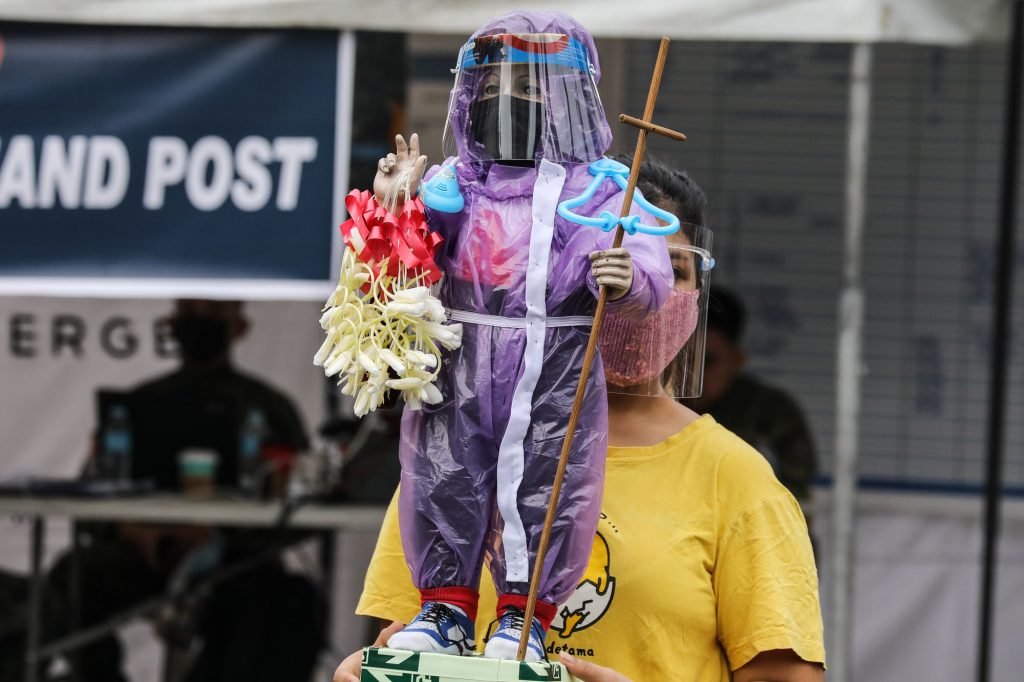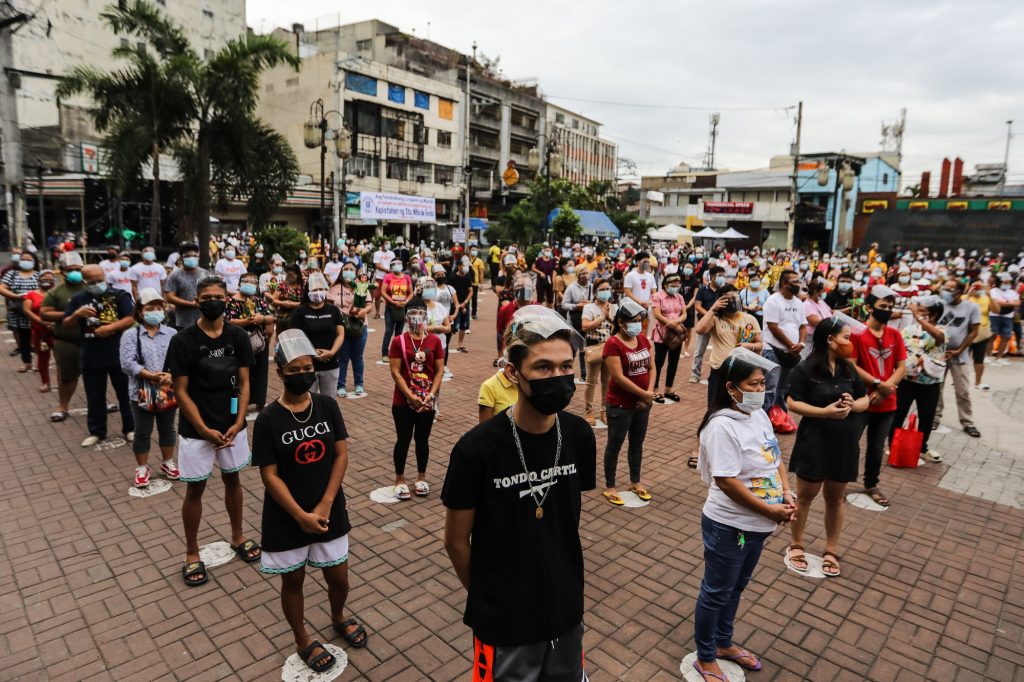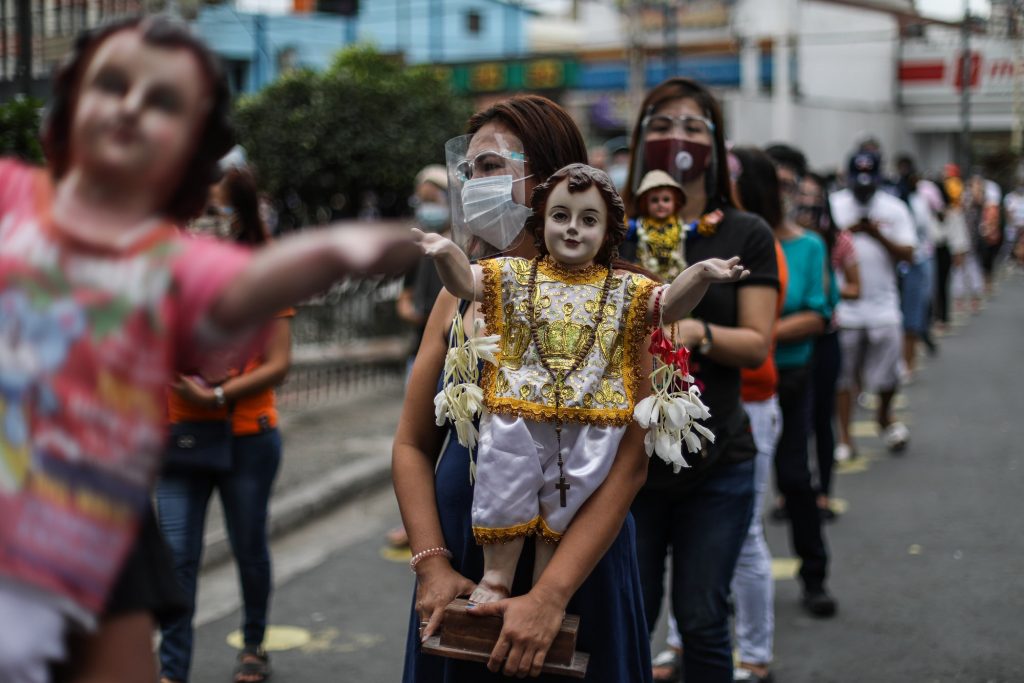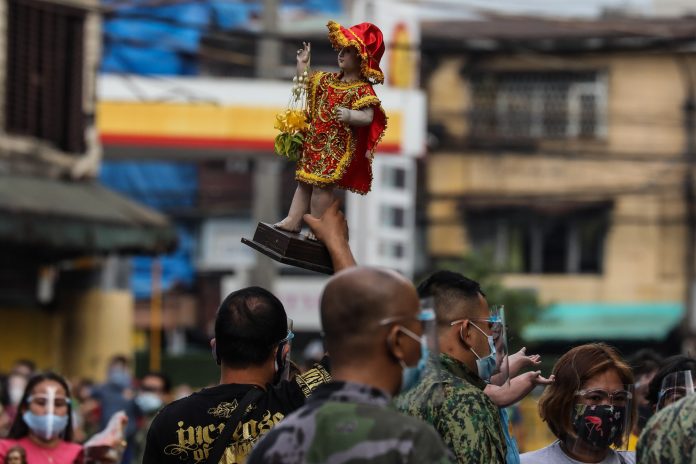On the occasion of the “feast” of the Santo Niño (Holy Child) in Manila, Bishop Broderick Pabillo, apostolic administrator of the archdiocese, called on the faithful to fight child abuse especially during the pandemic.
“If we are really devotees of the Santi Niño we should be united in fighting the exploitation of children,” said the prelate during Mass at the Archdiocesan Shrine of the Santo Niño in Manila’s Tondo district on Sunday, January 17.
“Devotion is not only shown in prayer, it is manifested in various ways such as giving importance to children and their rights,” said Bishop Pabillo.
“It is true that we take care of our children, our nephews, grandchildren, but we may neglect other children,” he added.
The prelate cited the many victims of violence, human trafficking, sexual abuse, and online sex in the country, adding that even in homes and in churches children are being abused.
“Even in the church, child abuse occurs,” he said. “That’s why pedophilia in the church is a big scandal and we deeply regret that,” said Bishop Pabillo.
He said sexual abuse happening in the family “is much bigger especially now during the pandemic period when everyone is confined in their homes.”
Child abuse during pandemic
At the height of the coronavirus pandemic last year, the Religious of the Good Shepherd congregation in the Philippines called for vigilance against online sex exploitation of children.
In a statement, the the religious congregation of nuns said women and children have become more vulnerable to domestic violence and exploitation during the lockdown.
The nuns said that while the pandemic has increased people’s yearning to feel connected through technology, there are those who use this to harm others.
“These individuals take advantage of the situation of their physical isolation to exploit others, especially women and children who are desperate to survive this crisis,” read the nun’s statement.
The religious group warned that the number of unreported cases of online sex exploitation of children, or OSEC, have become “more frightening.”

A study done by non-government group International Justice Mission (IJM) noted that the prevalence rate of internet-based child sexual exploitation in the country more than tripled in the past three years.
The study shows that the estimated number of IP addresses in the Philippines used for child sexual exploitation each year rose to 81,723 in 2017 from about 23,333 in 2014.
IJM’s collaborative casework data revealed that 62 percent of its OSEC cases involved a family member, relative, close family friends, or neighbors, as perpetrator.
Special attention for children
Pope Francis last year called on world leaders to be “especially attentive” to children who have been denied their fundamental rights amidst the coronavirus pandemic.
“In many parts of the world, this situation risks leading to an increase in child labor, exploitation, abuse and malnutrition,” said the pontiff.
In the Philippines, 280,000 children have become victims of cybersex trafficking between March and May, about four times the rate last year, making it the hotspot for online child pornography.
The United Nations has also recorded an estimated 12 million girls below 18 years old who are wed every year.
The UN has cautioned that an additional 13 million child marriages will happen in the next decade if the economic and social impacts of the COVID-19 pandemic are not properly addressed.

Pope Francis also pointed out that violence against children, including child abuse and pornography, has “dramatically increased.”
A helpline for children in India has received 92,000 calls in just 11 days to ask for security from abuse and violence during the government-imposed lockdown due to the pandemic.
Pope Francis called on authorities to be attentive to children, especially those who were particularly discarded of their right to life and to schooling.
He cited the call of Pakistani education advocate Malala Yousafzai who said that “one child, one teacher, one book and one pen can change the world.”
Devotion to the Child Jesus
Devotion to the Santo Niño, an image of a boy Jesus usually dressed as a king, has been part of popular piety in the Philippines for centuries.
The oldest and most popular image of the Santo Niño can be found in the central Philippine city of Cebu where the grandest celebration dubbed the “Sinulog” is held every year.
Every January, millions of people flock to a basilica in Cebu where the image of the child Jesus is housed while religious processions and colorful parades are held in the streets of the city.
In recent years the events have reportedly drawn up to three million people, making Cebu’s Sinulog one of the largest annual events in the Catholic world.
The “Sinulog” or dance prayer, the oldest festival in the country, comes from the Cebuano word “sulog” or water current.

While dancing, devotees would wave their hands in the air and shout “Viva Senor Santo Nino!” or “Hail to the Holy Child! and “Pit Senyor!” short for “Sangpit sa Senyor (Call to King).”
The 38-centimeter-tall image of the Santo Niño in Cebu is a gift from Portuguese explorer Ferdinand Magellan to the queen of the island, Juana, during her baptism as a Catholic in 1521.
Pope Paul VI granted a Canonical Coronation of the image of the image on April 28, 1965 and later raised its shrine to the status of Minor Basilica on May 2 1965 via a Papal bull titled Cubanula Religionis to mark the fourth centenary of Christianity in the Philippine Islands.
The image is replicated in various parts of the country with different titles and is one of the most beloved and recognizable Filipino cultural icons.
The image of the Santo Niño de Cebu was originally produced by Flemish artisans, according to a hagiography, based on a vision of Teresa of Avila, a mystic of the 16th century.









